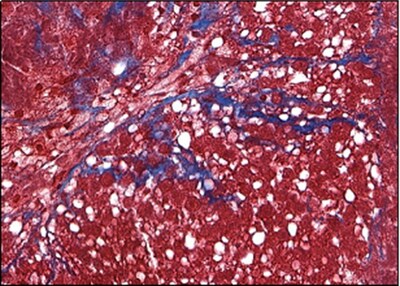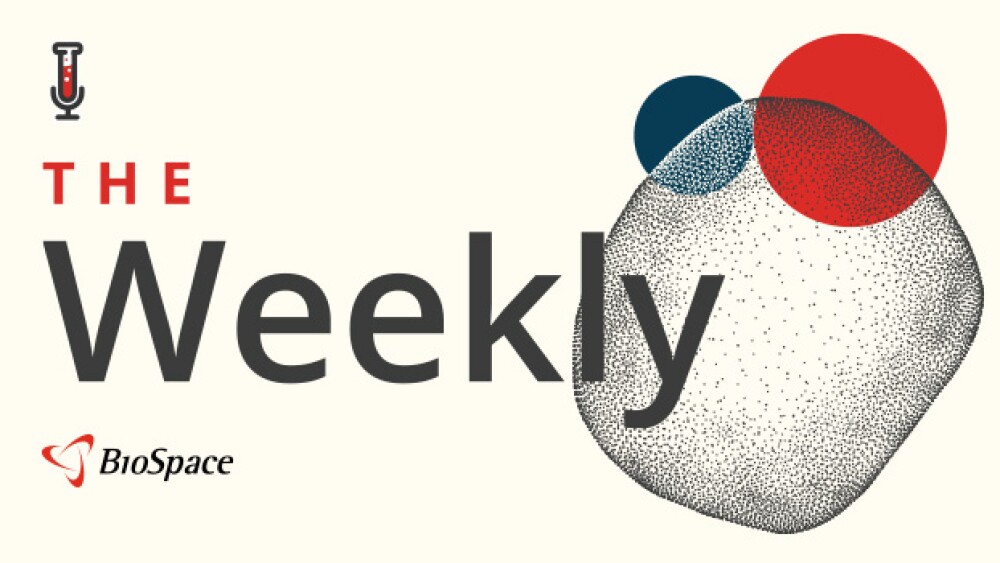Viscient Biosciences announced that its scientists, along with collaborators from University of California, San Diego, Sanford-Burnham-Prebys medical research institute, and Salk Institute, have published the first demonstration of a liver fibrosis phenotype in a 3D human tissue model of MASH demonstrating strong comparability to the native disease by multiple measures.
Viscient has leveraged model to develop novel MASH therapies
SAN DIEGO, Jan. 23, 2024 /PRNewswire/ -- Viscient Biosciences ("Viscient") today announced that its scientists, along with collaborators from University of California, San Diego, Sanford-Burnham-Prebys medical research institute, and Salk Institute, have published the first demonstration of a liver fibrosis phenotype in a 3D human tissue model of MASH (metabolic dysfunction-associated steatohepatitis) demonstrating strong comparability to the native disease by multiple measures. Key features of MASH are conserved in the tissue and allow for superior disease understanding, drug discovery and development. MASH is the new clinical term introduced in 2023 to replace NASH (non-alcoholic steatohepatitis).
The corresponding author on the work is David Brenner, M.D., world-renowned liver biologist, former Dean of the School of Medicine at UCSD, and current president and CEO of Sanford Burnham Prebys. "These tissues display all of the characteristics of MASH, including fibrosis, without any additional disease inducing agents," said Dr. Brenner, a longtime leader in liver disease research.
The new paper in The American Journal of Pathology, entitled "Role of Hepatic Stellate and Liver Sinusoidal Endothelial Cells in a Human Primary Cell Three-Dimensional Model of Nonalcoholic Steatohepatitis", has published online and will be published in the print edition cover dated March, 2024.
Co-author Jeffrey N. Miner Ph.D. , cofounder and CSO of Viscient Biosciences underscored the importance of being able to produce a high fidelity in vitro human primary cell model of MASH. "This approach utilizes the patient's own diseased cells, allowing them to generate the disease within the bioprinted tissue. We specifically exclude agents that artificially induce disease," he said. "We believe this advance enhances the translation of our results to human clinical trials and drug discovery."
Viscient previously announced that it identified the world's first drug candidate discovered primarily using the 3D bioprinted tissue models of disease described in this manuscript which are highly relevant to MASH disease. MASH is a growing epidemic disease that is believed to affect more than 10% of the US population. MASH can often lead to hepatocellular carcinoma or liver failure. Due to the devastating effects of MASH on patients and its wide prevalence, analysis have projected future pharma industry revenues for treatments in the tens of billions of dollars per year.
Viscient's lead compound is an oral small molecule designed to hit a novel target identified in 3D tissue models of disease. The lead compound's clear reduction of fibrosis in Viscient's MASH models is promising because Viscient's 3D models of MASH have shown extremely high correlation with clinical results in patients. The model demonstrates fibrosis reduction for known clinically active compounds, while revealing lack of fibrosis reduction for many compounds that failed in Phase 2 or Phase 3 for MASH. As the new publication demonstrates, this is likely due to the excellent replication of MASH characteristics, comprising key biochemical, histopathological, and transcriptional features of diseased human liver.
Viscient Biosciences believes that we can develop compounds with a significantly higher rate of success in clinical trials, and lower drug development costs per approved drug, with 3D human models that truly demonstrate fidelity to the disease in humans. "The current work with Dr. Brenner's team in The American Journal of Pathology represents leading edge work with a primary diseased cell model, and an unparalleled proof set demonstrating the characteristics of disease," said Keith Murphy, Viscient CEO, "We anticipate that the drugs we are already developing from this model, the opportunities coming next, and the disease insights we have gained, will allow us to benefit patients strongly with therapies that succeed at a high rate in clinical trials."
Viscient and its collaborators are leading the world in creation of 3D human cellular models with high clinical relevance, and in demonstrating the application of these models to impact drug development at every stage.
About Viscient Biosciences
Viscient Biosciences is an early-stage biotechnology company that is developing novel therapies for MASH and other liver diseases. Its lead compound, built to a novel target discovered in proprietary 3D models of human liver disease, is expected to enter the clinic in the next 12 months. These models exhibit high fidelity to clinical MASH disease and can faithfully reproduce clinical data on efficacy for drugs.
Utilizing these 3D human tissues as dynamic models of healthy and diseased human biology for drug development, the company identifies opportunities both for novel therapeutic development and the in-licensing or acquisition of existing drugs when the insights show existing drug benefit in a new disease.
About Sanford Burnham Prebys
Sanford Burnham Prebys is an independent biomedical research institute dedicated to understanding basic human biology and disease and advancing scientific discoveries to profoundly impact human health. Our track record of pioneering research spans more than 47 years and has produced breakthroughs in cancer, neuroscience, immunology and children's diseases and is anchored by our NCI-designated cancer center. Sanford Burnham Prebys' drug discovery center and global partnerships propel our prototype drugs and therapeutic strategies toward improving human health. A deep culture of collaboration and commitment to educate the next generation of scientists unites Sanford Burnham Prebys researchers, partners and philanthropists in a shared mission to improve human health.
![]() View original content to download multimedia:https://www.prnewswire.com/news-releases/trailblazing-work-with-3d-human-liver-models-yields-accurate-mash-formerly-nash-phenotype-302041953.html
View original content to download multimedia:https://www.prnewswire.com/news-releases/trailblazing-work-with-3d-human-liver-models-yields-accurate-mash-formerly-nash-phenotype-302041953.html
SOURCE Viscient Bio, Inc.





